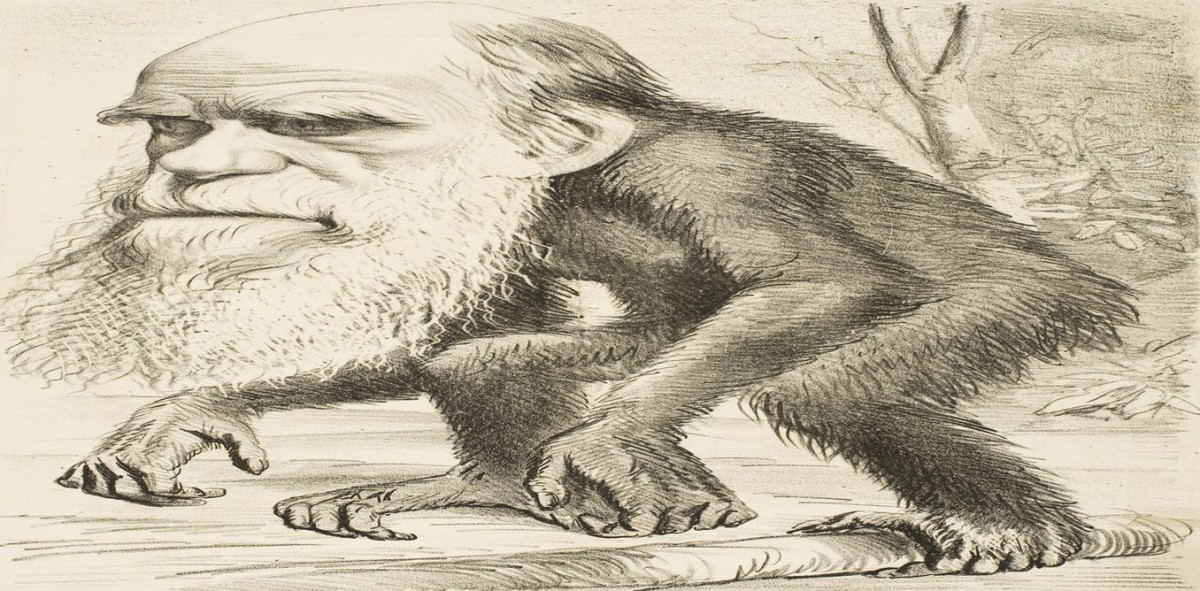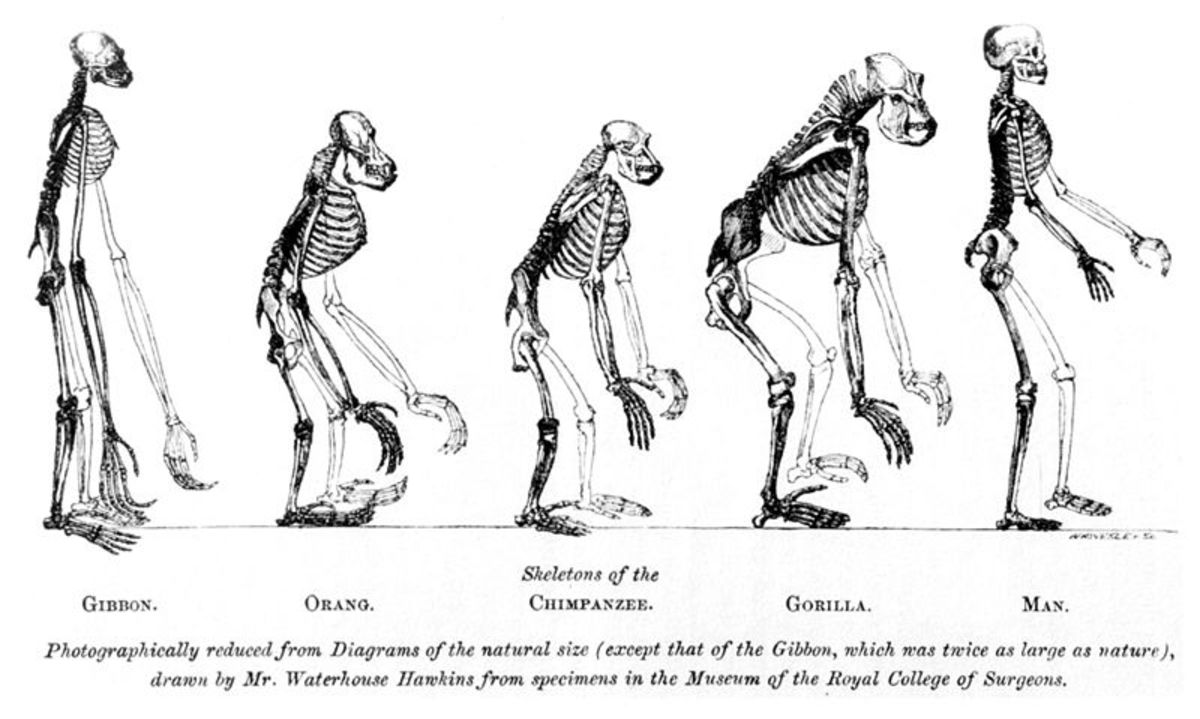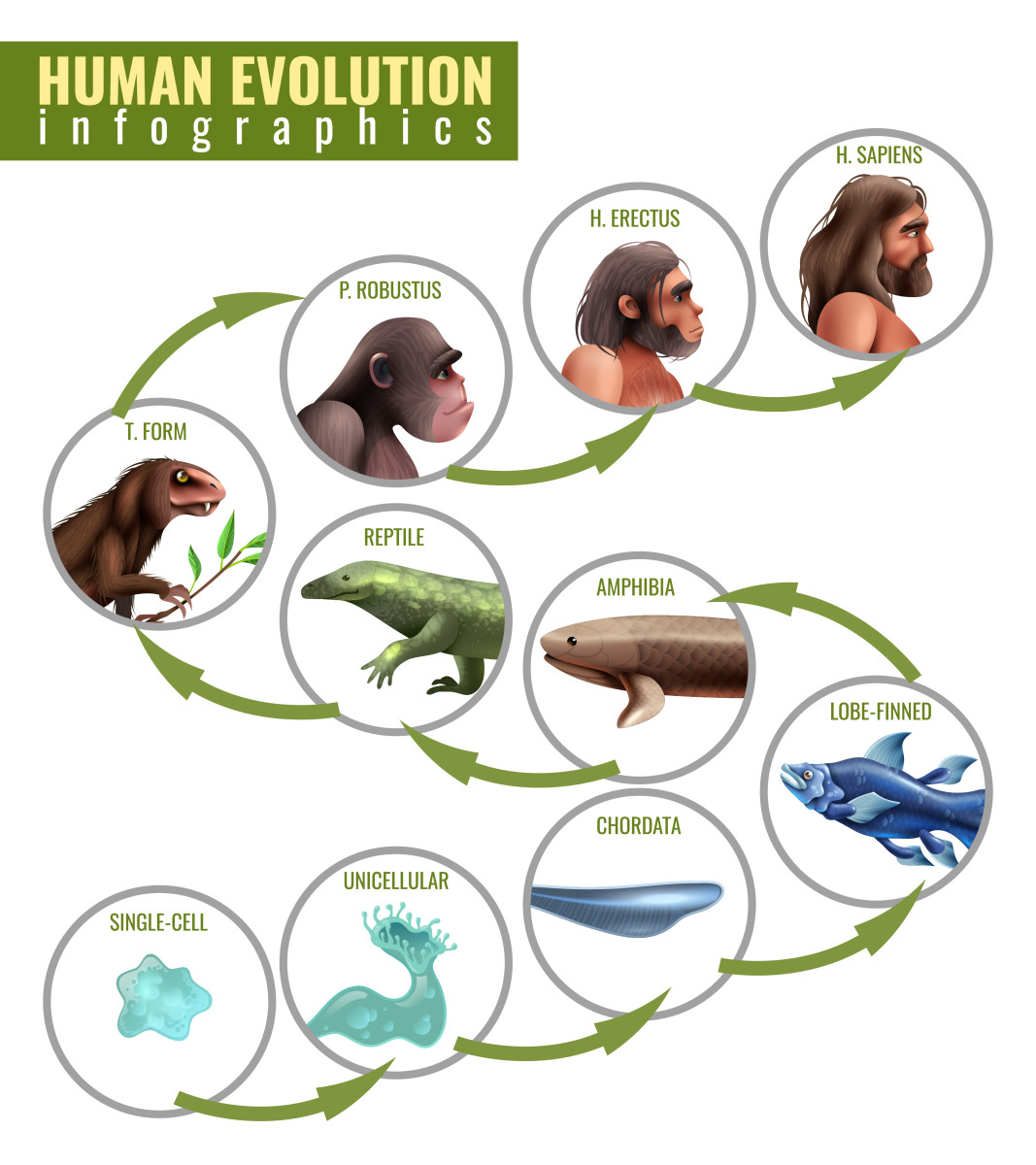Memetic Evolution

Religion is a Virus
Yes, religion is a virus, that's what I said! Now that your attention has been captured, allow me to explain. Some ideas in human history have had great influence and have had the potential to rapidly propagate from one mind to the next, in other words, some ideas are viral. This is the nature of such seemingly dissimilar phenomena as world wide revolutions and chain letters. Whether for better or worse, it makes no difference, history is full of ideas that have gained great popularity. Sometimes, we don't even know where these ideas initially came from. Take human language, for instance. The average person is often perplexed by how a language like, English, even came about. Did someone sit down and start "designing" the grammar and syntax of the English language from scratch? Did a group of people collaborate? These methods are unlikely.
What about religion? The same can be said for this. Religion, in one form or another, has been a part of humanity for as long as recorded history. The religions of today are almost completely different from those of the ancients, 10,000 years ago and further. However, common themes are always found between any of the present's tens of thousands of modern religions. This simple observation of similarity, reveals something analogous to the genetic property of inheritance, where one relgion derives some properties from it's predecessor and incorporates new ideas. Over time, this leads to a gradual, evolving religion, with millions of people unknowingly contributing to the very development of the religion. The process is so slow, however, and unintended by the human "hosts", that we attribute the conception of such beliefs to gods. Powerful ideas, like Christianity and Islam, are extremely virulent, together occupying the minds of nearly half of all the world's inhabitants.
Self Replication and Natural Selection
Imagine a small machine, built by humans, which is able to build another (a copy) of itself. If we humans made just one of these remarkable machines, pretty soon, we'd have thousands, since the first would copy itself into two, and then those two would copy and have a total of four. Then 8, 16, 32, 64, 128, 256, ... The process would continue faster and faster. Of course, eventually, material acquisition would become a problem to these little robots since these machines would run out of "food" to make additional copies, and would have to seek out new resources for further construction.
Suppose that these machines, like all life on Earth, were imperfect, meaning that although they may try to make a perfect copy of themselves they generally fail to do so, due to occasional small errors in the fabrication process. Then, sometimes the copy would contain defects, possibly preventing the machine from doing anything at all. Machines that do nothing would be dead! But, let's say that dead machines are born only 50% of the time (this is pretty bad) and that the other 50% were functional. Since the copies are never EXACTLY the same as their parents, the living copies (50%) would take on only one of two possible values. They will either be a little better than their parents, or a little worse.
NOW, if that offspring were a little better, then it would succeed more often at finding food, replicating, or doing whatever it needs to do during the course of it's existence. What this means, ultimately, is that this "little bit better" robot will make more copies that most of it's peers, until it's offspring begin to dominate the "gene pool", or in other words, after a while most robots will be the offspring or relatives of the more successful robot. The robots born dead, or a little worse than their parents, will have a hard time competing and will not tend to dominate anything. Their offspring will be few in comparison of the more fit, faster, or better, robots.
The end result is deceptively simple. There's obviously a selection pressure for these robots to become better at what they do, which is living (replicating). But who's making the selection!? No one is! That's the amazing part. The selection is totally natural (natural selection). Robots that can't replicate won't make offspring as much as successful robots will. That's all there is too it. Now, of course, even if the set of parameters is low, as any chaos theorist will tell you, the behavior of a simple system can still be extraordinarily complicated. Just take a look at the all the life on Earth.
Natural selection, mathematically, or computationally speaking, is then more of a sort algorithm than anything else. It sifts through an endless variety of designs, and makes pretty good choices in the moment, although not necessary strictly optimal.
Feasibility of self replicating robots: No one has succeeded in building such a machine as of yet, but NASA has detailed the process and estimated the cost at over several hundreds of billions of dollars. I myself, have proposed designs that could make a relatively simple self replicating machine. Almost any machine, life form, or entity whatsoever, capable of non-trivial self replication, will experience a natural selection, and as a consequence, evolution.
Computer virus are a notorious example. They spread viciously from one computer to another, but tend to use flawless methods of replication, meaning mutation drifts do not accumulate. Without mutation their is absolutely no chance for evolution, since each offspring is exactly identical to it's parent. Computer software which allows a small error rate, will in fact exhibit natural selection and evolution, and as a consequence, an extremely diverse set of reactions that are nearly impossible to foresee. Self evolving viruses could potentially learn to elude antivirus software, autonomously, and over time might lead to something like what happened in the Terminator movies!
Non Physical Replication
Computer viruses are a non-physical example of a replicating system which, under the right circumstances, would be capable of evolution. While the computer is real and the damage is real, the virus itself could be considered purely immaterial, having no mass and no physical construction. It's just ones and zeros in memory, moving through communication protocols from one computer the another.
Now for the brain virus part. What kind of non physical information might possible propagate through human brains in the form of viruses? Ideas! Certain thinks like stories, events, jokes, and even things like religion and language, are purely abstract mental fabrications which are capable of rapidly spreading from one person to another. They spread through one person speaking, or writing, or in some other way, signifying the details of the message. These viral like concepts are called memes. And the study of memes is known as memetics.
Evolution of a Simple Meme
Consider a joke told from one child to others. Preferably a joke which was made up by the child and intended to be humorous. Unfortunately, this particular child unintentionally made a boring joke, and the other kids didn't laugh. Well, since this joke was transmitted from the originator to the group of kids, it successfully passed on to the group, but it isn't a meme - it's not viral. The other kids are unlikely to tell this joke to anyone else and it won't propagate passed it's first generation. In other words, this joke has died.
Now instead, consider that same joke was mildly funny, and that at least a few kids will be tempted to repeat it. Due to imperfect in the human brain's ability to perfectly recall the exact details, verbatim, of the joke, they accidentally miss or add details, or change the wording or timing of the joke. Additionally, say the first child has told his joke to a total of 100 people and each of these 100 kids tells it again to another 100 people over their lifetimes. Then, by the 3rd generation, there's already 10,000 people who have heard the joke, and consequently, 10,000 slightly different varieties of that joke. Meaning that since none of them were told EXACTLY the same, some are quantitatively funnier than others, although only slightly. The evolution of the meme occurs in this simple feature of the imperfections of replication. The funny versions are more likely to be told than the boring versions, and because of this will experience a greater degree of success and continued refinement. Over time, the joke may even evolve into something totally unrelated, at least at first glance. Of course, they would be related, in actuality, in very much the same way that we are related to our ancestors. Going back far enough we see our ancestors don't seem to resemble us at all, but then we notice they still have a body, four limbs, and a head. That's still pretty similar afterall!
Amemegenesis
Not all memes need to be started intentionally from a person. They can sometimes start unintentionally, just by a slip of the tongue. With luck, anything anyone of us says, could eventually spread around the world. If the meme, the contagious idea, reaches enough people, and has a high degree of affect on those people, it may continue to spread through generations and "live" amongst humans for a long time. These memes will grow into complexity and spread, at first by word of mouth and stories, but then by books, and now, internet and other electronic media. Over time, the originator of the meme would be impossible to determine.
Christianity for example, is a meme, and so are practically all other religions. But, Christianity has many fail-safes to ensure it's continued propagation. Who put in these fail-safe mechanisms? No One! Remember, that's the nature of evolution. Memes find ways, through natural selection, to enhance their own chances of survival. In this way, religion can be thought of EXACTLY as a living organism. Or, for a better analogy due to it's lack of a physical self replicating machine (it's only a set of ideas after all - A meme ), Christianity is a virus!
So, let's analyze it accordingly. Christianity branched off it's parent religion, Judaism. Then some time later, Islam branched off of Christianity. So, Judaism is an ancestor to both Christianity and Islam, Islam being the most recent addition to the tree-of-religion-memes. This hierarchical relationship is identical to a tree of life in biology. These tree religions obviously share common ideas, but for whatever reason, they have diverged over time, to better fit their own local chances of survival.
Christianity has several survival strategies. One, it teaches adherents that the only way to God is through Jesus and a belief in Christianity. This mechanism relies are humanity's fears of death and the meme basically follows the reasoning, "if you don't help propagate me, you will burn forever in the afterlife." To avoid this discomfort, people generally simply believe the meme and opt to be forever plagued by the mind virus. Another mechanism employed by the memetic virus, is to require children to be "saved" at an early age to prevent their possible damnation in the event of an early demise. Many parents buy into this one. The meme feeds off the fact that the human brain is very susceptible to influence at an early age and is much more susceptible to the infection while young. A fully grown adult, entering a Christian church for the first time in his life, is unlikely to become infected, since his brain was not primed to receive such a radical idea.
DANGER - Stay Away from the Memes
If you are a Christian and don't agree with me, then just do a replacement of your religion with another that you don't believe in. Like Scientology for instance! =) Research how Scientology originated. The memetic approach models the affluence remarkably well. Scientology is a relatively new religion, it's only been 50 years or so and will likely continue to exist for some time, perhaps thousands of years like Christianity. After this time has elapsed, it will be indistinguishable from a "real" religion.
If you find out that your three year old kid's babysister is a devout Scientologist, wouldn't you be scared that your kid would grow up following that religion? This here illustrates the contagiousness of memes. The only solution is a full quarantine!








